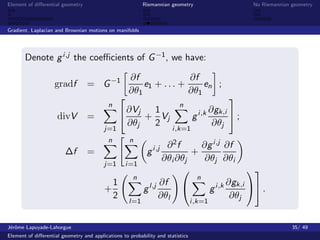

Curves that are not (pieces of) circles or lines will have a curvature varying from point to point. Circles and lines have constant curvature.

A circle with a small radius is more ”curved” than a circle with a large radius. Well, a line is not curved at all its curvature has to be zero. They can be derived from the geometry of a solid body or particle. These are properties that do not change under congruence. Geometric Properties are properties that solely depend on the geometry of an object, not of how Source: Wikipedia What are Geometric Properties? When curves, surfaces enclosed by curves, and points on curves were found to be quantitatively, and generally, related by mathematical forms, the formal study of the nature of curves and surfaces became a field of study in its own right, with Monge’s paper in 1795, and especially, with Gauss’s publication of his article, titled ‘Disquisitiones Generales Circa Superficies Curvas’, in Commentationes Societatis Regiae Scientiarum Gottingesis Recentiores in 1827. The general idea of natural equations for obtaining curves from local curvature appears to have been first considered by Leonhard Euler in 1736, and many examples with fairly simple behavior were studied in the 1800s. These unanswered questions indicated greater, hidden relationships.
Basic differential geometry series#
Mathematical analysis of curves and surfaces had been developed to answer some of the nagging and unanswered questions that appeared in calculus, like the reasons for relationships between complex shapes and curves, series and analytic functions. Differential Geometry is the study of geometric properties using Differential and Integral Calculus. It is a branch of mathematics dealing with geometrical forms and the intrinsic properties of curves and surfaces as related to differential calculus and mathematical analysis.ĭifferential geometry arose and developed as a result of and in connection to the mathematical analysis of curves and surfaces.


 0 kommentar(er)
0 kommentar(er)
